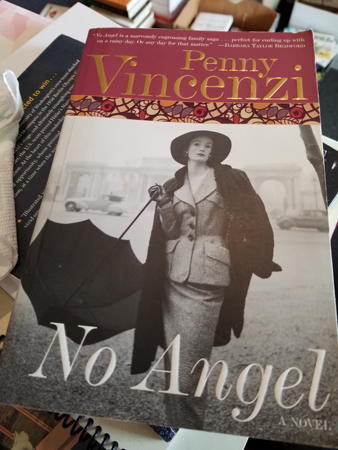Lethal White is the fourth Cormoran Strike mystery novel by Robert Galbraith, a pseudonym for a fairly well-known fantasy writer, J.K. Rowling. Rowling left behind the YA world of Harry Potter (you may have heard of him) and started writing mysteries, with a slightly non-conformist detective and his smart, beautiful and terminally insecure female partner Robin Ellacott.
I’ve read my way through the others and, mostly, liked them, although I do have to admit I’ve liked each one a little less. The mystery is always the weakest part of the book. Usually it’s a convoluted plot that is wildly implausible. Usually the topic surrounding the mystery is interesting. And up until now, the will-they/won’t-they Unresolved Sexual Tension dynamic between Corm and Robin was at least interesting.
Then there’s Lethal White.
I’m writing these words before I’ve finished the book because there is a good chance I won’t finish it. It’s long, 630+ pages, which too long for a mystery. It is mostly boring, with brief showers of behavior that is maddening and makes me lose respect for the characters even more, especially Robin, who I want to like and admire. This book makes that impossible.
Warning, spoilers:
At the end of the book before this one, A Career of Evil, Robin married her longtime fiance Matthew. She was conflicted and unsure but did it anyway, presumably because she felt pressured since her parents spent a lot of money on the wedding. Lethal White picks up at the wedding reception itself. Matthew is a jerk; staying with him weakens Robin, and marrying him even more so. To try to keep the flagging tension going, Galbraith invents a series of tiny emergencies that make Robin feel like she has to stay; for instance, on their honeymoon, just as she’s decided to tell him she wants an annulment, Matthew falls sick from a coral scratch, and begs her not to leave him (he’s delirious). These events that make Robin feel sorry for him give the book the dated flavor of a 1940s melodrama. Like it or not, the reality of marriage in the 21st century is that a marriage isn’t hard to get out of. Robin, get a divorce and put together a payment plan to reimburse your folks for at least part of the wedding costs, okay?
I’m sure she is going to leave him because this book is dropping heavy hints about what might be going on between Matthew and a female co-worker, but I probably won’t hang around to find out.
And then there’s the mystery… well, maybe there is. There’s a story from the past, ten years previously, told to Strike by an unreliable person; there’s a dirty-tricks job in the House of Commons which conveniently involves the same family as the ten-year-old story, and in a 630+ page mystery a corpse appears right around page 250. There is a decadent aristocratic family with horses and cutesy nicknames, and we are beaten about the head and shoulders with those names; Izzy, Fizzy, Torks, Pog… Flopsy, Mopsy and Cottontail. I get that we’re making fun of the aristos and indirectly the class system… it’s just overdone.
It’s overdone, and I’m probably done. I’m nearly to page 300, and see no compelling reason to continue.
I hope Rowling– oh, sorry, Galbriath — just had a bad patch, and that Lethal White is an anomaly, not an indication of where this series is going. As it stands, I’m counting myself out. Unlike Robin, I do know when to leave.
-
Archives
- May 2024
- February 2023
- January 2023
- December 2022
- November 2022
- October 2022
- September 2022
- August 2022
- July 2022
- June 2022
- May 2022
- April 2022
- March 2022
- February 2022
- January 2022
- December 2021
- November 2021
- October 2021
- September 2021
- August 2021
- July 2021
- June 2021
- May 2021
- April 2021
- March 2021
- February 2021
- January 2021
- December 2020
- November 2020
- October 2020
- September 2020
- August 2020
- July 2020
- June 2020
- May 2020
- April 2020
- March 2020
- February 2020
- January 2020
- December 2019
- November 2019
- October 2019
- September 2019
- August 2019
- July 2019
- June 2019
- May 2019
- April 2019
- March 2019
- February 2019
- January 2019
- December 2018
- November 2018
- October 2018
- September 2018
- August 2018
- July 2018
- June 2018
- May 2018
- April 2018
- March 2018
- February 2018
- January 2018
- December 2017
- November 2017
- October 2017
- September 2017
- August 2017
- July 2017
- June 2017
- May 2017
- April 2017
- March 2017
- February 2017
- January 2017
- December 2016
- November 2016
- October 2016
- September 2016
- August 2016
- July 2016
- June 2016
- May 2016
- April 2016
- March 2016
- February 2016
- January 2016
- December 2015
- November 2015
- October 2015
- September 2015
- August 2015
- July 2015
- June 2015
- May 2015
- April 2015
- March 2015
- February 2015
- January 2015
- December 2014
- November 2014
- October 2014
- September 2014
- August 2014
- July 2014
- June 2014
- May 2014
- April 2014
- March 2014
- February 2014
- January 2014
- December 2013
- November 2013
- October 2013
- September 2013
- August 2013
- July 2013
- June 2013
- May 2013
- April 2013
- March 2013
- February 2013
- January 2013
- December 2012
- November 2012
- October 2012
- September 2012
- August 2012
- July 2012
- June 2012
- May 2012
- April 2012
- March 2012
- February 2012
- January 2012
- December 2011
- November 2011
- October 2011
- September 2011
- August 2011
- July 2011
- June 2011
- May 2011
- April 2011
- March 2011
- February 2011
- January 2011
- December 2010
- November 2010
- October 2010
- September 2010
- August 2010
- July 2010
- June 2010
- May 2010
- April 2010
- March 2010
- February 2010
- January 2010
- December 2009
- November 2009
- October 2009
- September 2009
- August 2009
- July 2009
- June 2009
- May 2009
- April 2009
- March 2009
- February 2009
- January 2009
- December 2008
- November 2008
- October 2008
- September 2008
- August 2008
- July 2008
- June 2008
- May 2008
- April 2008
- March 2008
-
Meta









